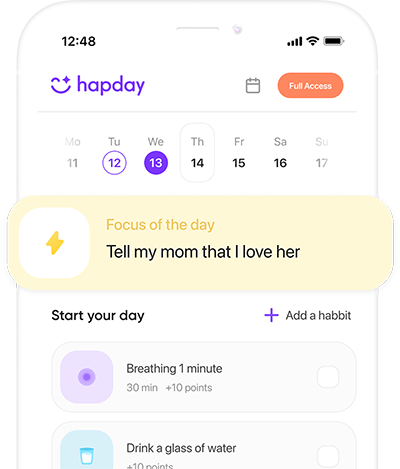Table of Contents
- Understanding ADHD: Beyond the Hyperactive Label
- Motivation with ADHD: A Complex Caper
- Strategies to Master ADHD Motivation
- Cognitive Behavioral Therapy (CBT)
- Mindfulness Meditation
- Environment Tweaks
- Nutrition & Moving the Body
- Leveraging Tech
- Medication and Supplements
- Unearthing Emotional Barriers
- A Real-World Dive: Sarah’s Journey
- Gauging Victory & Tweaking Tactics
- The Path Ahead
Understanding ADHD: Beyond the Hyperactive Label
People often reduce ADHD to a caricature of hyperactivity, yet it’s a complex tapestry of symptoms. These include not just inattention and impulsivity but also emotional chaos. As the Centers for Disease Control and Prevention (CDC) cites, around 11% of kids and 4.4% of adults in the U.S. have been tagged with an ADHD diagnosis. For women, particularly those who discover this later in life, ADHD manifests uniquely, often blending in anxiety and depression.
Motivation with ADHD: A Complex Caper
Let’s bust a myth right now: Motivation challenges in folks with ADHD? Not due to laziness or lack of desire. Instead, it’s tangled with the brain’s lackluster reward system. The Journal of Neuropsychology spills the beans that a dysregulated dopamine system—in charge of reward processing and motivation—might be the real puppeteer here. These motivation quirks can emerge as:
- Task Initiation Stumbles: Getting started is tough, especially when the task seems blah or daunting.
- Sticking to It: Holding focus, particularly on lengthy or tedious tasks, can be akin to running a marathon barefoot.
- Emotional Rollercoasters: Emotional upheavals that can disrupt task completion, spawning frustration or anxiety.
Strategies to Master ADHD Motivation
Navigating ADHD demands a cocktail—blend behavioral tweaks, psychological hacks, and lifestyle remodels to truly make headway. Here’s a handful of science-rooted strategies to bulldoze through those mental blockades.
1. Cognitive Behavioral Therapy (CBT)
Strapped for a tried-and-true therapeutic ace? CBT is your stalwart ally. It’s like a mental compass, helping those with ADHD to juggle thoughts and actions better. A nugget from the Journal of Consulting and Clinical Psychology reveals CBT doesn’t just aid symptoms but also tames emotional turbulence.
- Set it Up: Slice bigger tasks into smaller bites. Wave goodbye to feeling bulldozed by tasks.
- Mind Shift: Swap the inner “I’ll never manage this” for a breezy “Let’s tackle this bit by bit.”
2. Mindfulness Meditation
Being here, now—that’s what mindfulness hones. Studies in the Journal of Attention Disorders show this DIY calm can perk up executive functions and throttle impulsivity.
- Everyday Ritual: A few mindful minutes can shore up your focus and melt stress away.
- Micro-Recharges: Utilize mini mindfulness moments to reset your motivational gears.
3. Environment Tweaks
Binging on a tidy, structured space can be a game-changer.
- Declutter Mission: Sweep away distraction magnets. The Princeton Neuroscience Institute reckons clutter is a sly brain bandwidth thief, sabotaging focus and task completion.
- Visual Sparks: Harness color codes or charts as in-your-face reminders of pending tasks.
4. Nutrition & Moving the Body
Food and activity—strong yet underrated allies in the ADHD realm. The Journal of Clinical Psychiatry gives a nod to omega-3s for dialing down ADHD symptoms.
- Eat Smart: Load up on omega-3-friendly eats and vital nutrients to feed your brain’s health.
- Keep Moving: Slide into regular routines like yoga or cardio to boost mood and cognition.
5. Leveraging Tech
Digital helpers can inject structure and rhythm, keeping someone with ADHD in step with deadlines.
- Get Organized with Apps: Platforms like Todoist or Trello can break goals into bite-sized tasks and sprinkle reminders along the way.
- Focus Hacks: Apps, say for the Pomodoro Technique, carve out focused work intervals punctuated with breaks.
6. Medication and Supplements
Sure, behavioral nuggets are golden, but meds can be vital players too.
- Prescription Stimulants: Often these are dopamine-boosters, amping up motivation.
- Supplements: Think magnesium, zinc, iron—though, best to consult a pro before adding these to your regimen.
Unearthing Emotional Barriers
Emotional upheaval—a sneaky ADHD cohort. Clearing out these emotional blocks can springboard motivation and life quality.
1. Get In Touch Emotionally
Pinpointing emotional patterns and triggers is pivotal. Track them in a journal—uncover these elusive culprits of demotivation.
2. Find Your Tribe
Support—key to carving emotional steadiness and sparking motivation. This may include family, friends, support assemblies, or mental health allies.
- Peer Collectives: ADHD groups offer shared narratives and problem-solving hubs.
- Psychological Counseling: Regular sessions unlock spaces to navigate emotional tangles.
3. Combat Stress
Stress? A fiend that can crank ADHD symptoms to eleven. Deep-breathing, muscle relaxation, or guided scenes can rein it back to sanity.
A Real-World Dive: Sarah’s Journey
Picture Sarah—a 28-year-old spinning her wheels in marketing—wrestling with ADHD post-diagnosis at 25. Starting projects felt like boulder lifting, deadlines a distant thunder. But by peppering in a few strategies from above, her motivation and productivity scales saw a much-needed tilt.
- Therapeuter Alliance: Weekly CBT revamped task tackling mechanics and nudged positive self-dialogue.
- Mindful Rituals: A 10-minute daily session of mindfulness cut anxiety at its root.
- Visual Strategy: A decluttered workspace peppered with reminders yielded task clarity.
- Movement Mojo: Morning yoga infused energy and sharpened focus.
Gauging Victory & Tweaking Tactics
Charting a course through ADHD motivation requires custom tailoring—what fits one may not suit another. Keep tabs on what works and what flops.
- Progress Notes: Journals or apps for updates pinpoint areas calling for the overhaul.
- Embrace Change: Be ready to pivot or overhaul approaches to fit evolving needs.
The Path Ahead
Taming ADHD motivation isn’t a one-strategy wonder; it craves a multi-pronged approach attuned to the cognitive-emotional

